Donna Robinson Divine argues that the Zionist nation-building story, while inspiring, does not reflect the trials, pains and losses of the nameless immigrants who deferred their own happiness to advance the Zionist cause in the years after the Balfour Declaration. Zionism promised that a Jewish state would disrupt the grim pattern of Jewish history while providing Jews with a new way to perceive themselves. But very much like Jewish prayer, Zionist history was written in the first person plural. Only in the last generation or so have Israelis begun to assess what it took for individuals – the founders of Israel – to sacrifice personal desire for the sake of the Jewish homeland.
Introduction
The colonisation of Palestine brought men and women of diverse backgrounds together in the most unfamiliar of circumstances, it also forced them to confront the dissonance between Zionist theory and practice. Imagining a homeland that fully liberated Jews from their marginal and subordinate existence was much easier than bestowing on it the absolute harmony of the utopian Zionist vision. Few have ever asked how ordinary Jews who came to live in Palestine in the 1920s experienced the Land of Israel. Did they really find a new home to which they felt belonging? How did Palestine’s Jews live in the shadow of the radical difference between the home they left behind and the homeland they encountered? Are we sensible of the traumas and the losses these pioneers endured?
Immigrants, many teenagers or in their early twenties, separated from the comfort of family and birthplace, had to struggle not to feel themselves to be strangers in the new land. As Jews outside Palestine, they could embrace Zionism and its vision of a national home as an abstract ideal. In Palestine, Jewish immigrants could not help but see the national home as an unforgiving climate, an alien landscape, and an assortment of newly formed bureaucratic institutions whose rigidity and incomprehensibility shaped their lives. In Europe, Zionists could freely picture the future Jewish society; in Palestine, their daily activities formed it. The differences were profound. The Zionists recognised the need not only for fresh policies to accord with the post-war times, but also for a new paradigm that would make sense of the radically new circumstances for the immigrants.
The Hebrew poems and songs composed during the British Mandate – and the discourse surrounding the Jewish National Home – did not simply legitimise a new Jewish identity; they also formed it. The incorporation of Palestine into the British imperial domain after 1918 provided the impetus for the creation of a Zionist narrative about the building of the Jewish national home.[1] Although it did not always accord with the reality, this narrative generated the framework for scholarship for many decades, ensuring that historical accounts of those pre-state years were marked by an emotional intensity but not always with genuine historical accuracy. Surely, a more careful accounting – one not caught up in the spiritual charge of Zionism’s ambitions for transforming the Jewish people – is overdue?
Unacknowledged suffering
Before 1917, Zionists who settled in Ottoman Palestine were called immigrants – Mehagrim – while from the very first years of British rule, they were deemed Olim – people who ascended, a term once reserved for those who came to the holy land as an act of piety or for those called to bless the Torah in synagogue worship. It was in the 1920s that 1882 was declared ‘the First Aliyah’ and 1904 ‘the Second Aliyah’. 1919 came to be seen as the start of the ‘Third Aliyah’, and the dawn of a new age peopled by idealists elevating agricultural labour and Hebrew into a sacred duty and service.
Zion began as an other-worldly ideal. To make it an actuality, Zionists were determined to bring back to life a language formerly reserved for prayer and holy texts as a vehicle to modernise Jewish life in the Land of Israel. No wonder the Balfour Declaration was alarming to many Zionists who feared that British sovereignty might move the site of political action away from the Land of Israel to London while a new language – English – would set the course of public life, both developments inevitably clashing with and compromising the purity of their visions. Zionist visionaries could not, of course, detach themselves from conflicts over policies on immigration or employment practices. Nor were they willing to do so, even though they were often fighting for a lost cause. But they could shape the way people understood and interpreted these matters. And so, to confront what they perceived as the dilemmas of national identity produced by becoming part of the British Empire, Zionists invented a new and powerful lexicon about a Jewish nation remade, a new collective identity formed, a land with no natural resources reclaimed, and a new Jewish society forged by a collective act of will.
Zionist leaders dramatised these notions by presenting the agricultural collectives as emblematic of the Jewish National Home. In fact, these collectives never encompassed more than a tiny percentage of Palestine’s Jewish population [under one per cent in some years]. They were presented as bound together by a shared commitment to the principles of freedom, love of the land, physical labour, and revitalising the Hebrew language – all this seemingly accomplished by sheer will – ‘Yesh Me-Ayin’. In truth, while Zionist leaders may have wanted to remake the Jewish people and produce a new kind of social and cultural order, they also knew – but would not admit – that a radical disjunction persisted between national claims and national realities.
For example, while the Zionist narrative depicted agricultural communities as the future, most Jewish immigrants to Palestine – artisans, skilled labourers, proprietors of small workshops – focused on the present streamed into cities in search of a better life. They embraced many Zionist ideals – speaking Hebrew, at least on the street, and valuing Jewish labour – but they sought no social transformation. Rather, they transplanted their values and organisations [including synagogues] from the homes they had left behind. In their synagogues, they created self-help associations devoted to imparting skills and education and distributing aid to the needy – work never acknowledged in the Zionist narrative. That they never found their lives reflected in the national ethos caused substantial but unacknowledged suffering. It goes without saying that the religiously observant among them found almost no echo of their values in the dominant public culture.
And did the immigrants who embraced Zionism’s romantic ideals find the spiritual fulfilment they anticipated from working the land as members of communal groups? The communes formed to clear areas for new roads at the beginning of the mandate period leave us a record of the difficulties experienced by individuals seeking to live by the stipulations of the Zionist narrative. Scores of young men, together with a few women, journeyed to what was then a remote part of Palestine – the Jezreel Valley – in anticipation of uniting with the land as a means of personal growth and social change. Of the several memoirs of this experience, one is particularly valuable. Kehiliyateinu [Our Community] is a collective diary written to furnish evidence for the new social order and to show how communal interests could triumph over individual thoughts and feelings. However, instead of showcasing Zionism’s redemptive vision, the voices in this text possess their emotional power precisely because they describe what happened when people attempted to put those theories into practice. The diary is at its most compelling when disclosing the grief of activists heavily burdened by straining for perfection in their new community.
Although conventional Zionist pieties discouraged expressing disappointment with work – which the ideology associated with personal and collective liberation – the glamour of physical labour dissipated quickly. Disappointment when backbreaking physical labour did not produce either personal fulfilment or an intimacy with the land could trigger melancholy and self-doubt. To give substance to the claim that true unity with the land would yield harmony and a sense of fulfilment, pseudo-marriage ceremonies were invented and performed to bind men to the land and presumably infuse them with an intense sense of their mission. In one such ceremony, the self-proclaimed bridegroom pronounced the following words as blessing: ‘This land is not an ordinary bride … [but] as husband I give myself to the bosom of my new bride and thus will we all be given to the belly of this holy earth.’
Many of these young commune Zionists were desperately lonely. The encampments were isolated from one another and from the Jewish urban centres in Palestine. Members attempted to supplant friendships between individuals with ‘erotic’ attachments to community. Song and dance were expected to release libidinal energy that would, then, match individual desires with collective needs and principles. Ironically, people who were determined to reject the religious culture of the Diaspora experienced the kind of singing and dancing introduced by those with family ties to European Hasidism as elevating.
To be sure, the erotic release so frequently associated with song and dance was more properly the provenance of the Siha or discussion, dubbed the commune’s Guide to the Perplexed by one commune member, recalling the great medieval philosophical text of Moses Maimonides, and suggesting that the Siha was the movement’s most fully elaborated procedure for energising passions for the new social order. But as the diary demonstrated, the Siha discharged many other functions. For some, it operated as a mechanism of oppression, coercing people to express their private thoughts and emotions. The Siha thus evolved into what one member called a Vidui or confession, becoming a discipline intended to cleanse members of their sins and act as solace for individual failures. The particular sins disclosed – missing home, lapsing into Yiddish, longing for the music of Beethoven and Chopin rather than the sound of jackals – gave individuals a clear picture of their failures, naming instances when words, actions, or feelings did not conform to the movement’s utopian expectations.
It is important to state, again, that in these communes at this time, there were very few women and even fewer women’s voices published in this diary or any other. Although Zionist visionaries emphatically proclaimed men and women equal, many diary entries conjured up the idea of women as a source of sexual tension and communal division. When acknowledged at all, women were generally mentioned for their capacity to produce children. The commune asserted a special masculine relationship to spiritual regeneration, but as far as we can tell, expressions of homoerotic passions did not shape sexual relations: this was a sexually repressed community.
It was one thing to imagine physical labour as the only way to achieve spiritual fulfillment, quite another to experience it as such. It was one thing to believe in equality and a totally communal life with no separation between public and private – another thing to live that way. It was one thing to do away with religion – another to live without the warmth of family and synagogue, particularly on holidays. It was easy to criticise traditional worship but hard to replace it with something genuine and appealing. It was one thing to denounce Rabbis, another to marry without one. It was one thing to denounce religious rituals, another to bury loved ones without them.
Hebrew and silence
And it was one thing to insist on speaking Hebrew; it was quite another thing to comply with the demand. For Hebrew not only mobilised the impulses for revolutionary change, it also disciplined them. Hebrew weighed heavily on the minds of these visionaries because transforming a language once reserved for sacred texts into a tongue used by common people for daily needs symbolised the transformation of what had been understood as a religious community into a nation.
Labour, exertion, and sacrifice stood at the centre of the Zionist movement’s self-conception. To cast off the stain of the Diaspora, Zionists were supposed to engage in pioneering; both cultivating the land and speaking Hebrew were symbolic of the national project. Language would form the new Jew. Using one’s original mother tongue was not only considered a form of laziness but also condemned – wherever it was manifest – as an act of betrayal. While the home was perceived as the bastion of the mother tongue – with women typically less skilled in Hebrew than their male counterparts – it was also targeted as a site for social change. Zionists believed it was absolutely reasonable to urge people – even to shame them – into taking on the burdens of speaking Hebrew during leisure activity and in their individual interactions within the family. There could be no day of relaxation from the task of creating the nation. When poet laureate, Haim Nachman Bialik was caught speaking Yiddish on the Sabbath and was asked – how can this be? He replied: Yiddish speaks itself but Hebrew is labour [Melacha] and is forbidden on the Sabbath.
The revival of Hebrew was intended to order the experience of immigrants, shape their world outlook, and rationalise their place in the developing community. For those who loved the language and loved hearing the rhythm and rhyme of antiquity, bringing Hebrew into daily life created a deep sense of home. But for most immigrants, the pressure to adopt Hebrew alienated them from the words that could give full expression to their experiences. The limited vocabulary meant that the losses people felt could be neither acknowledged nor mourned.
Song, poem and the reveries
The experience forced many to leave the utopian projects but they did not concede that they had lost faith in their restorative powers. Instead, a silence was draped over the difficulties and the vision was turned into a public ethos or ideology, leaving its distinctive mark on Palestine’s Jewish culture and on conventional histories of the creation of the Jewish National Home. In particular, students and the young generation of poets and writers in Tel Aviv took to its themes of land, nature, and love with great avidity. Young teens made a point of affirming and identifying with these values not by joining communes but rather by becoming familiar with the Land of Israel by hiking and by singing the songs and reciting the poetry stirred by the reveries of the Zionist narrative. Consider, ‘Lo Sharti Lach Artzi’[2] written by Rachel, a young poet who described her homeland as gloried not by heroic deeds on a battlefield but rather by a tree planted on Jordan’s calm shores and by walking through its fields. To believe that Palestine could be conquered with the plow and simultaneously raised to glory through poetry was to believe that souls could be remade.
Only in song and poem could an independent Jewish society in the Land of Israel be imagined as the fulfilment of the Zionist vision of pure transcendence. The aesthetic functioned as a compensation for the losses associated with wrenching immigration and profound social and cultural change. The more the preconditions for transformation seemed beyond Zionist control, the more that the Jewish community fixated on language as a substitute for political action. And for this, there was plenty of warrant in Jewish history.
Balfour and the Jews of Palestine
The British Mandate’s Balfour policy exacerbated the tensions between Zionism’s original utopian idealism and its new need to meet the standards set by their imperial overlords. Zionists had to come to terms with the fact that the promise to found the state on the purest of visions could not be kept. But that promise had given Palestine’s Jews a sense of meaning as they negotiated the turmoil. People who crossed oceans and continents found themselves in a land unlike anything they could have imagined, subject to collective Zionist pressures, their unease not easily disclosed without violating the stoicism which took on the aspect of a moral imperative. The Zionist nation-building story did not reflect the trials and pains of the nameless immigrants who deferred their own happiness and desires to advance the Zionist cause. Zionism promised that a Jewish state would disrupt the grim pattern of Jewish history while providing Jews with a new way to perceive themselves. However, very much like Jewish prayer, Zionist history was written in the first person plural. Only in the last generation or so have Israelis begun to recover and assess what it took for individuals to sacrifice their own personal desires for the sake of the homeland.
The world of the two million Jewish immigrants who left Russia for a new homeland in the late nineteenth and early twentieth centuries – the world of Israel’s founders – is gone. Claiming that only sovereignty could confer on Jews the capacity to control their own destiny, those Zionist pioneers, unfortunately, could not liberate Israeli citizens from the ongoing burdens of having to defend their land. But Zionist founders – admirable and flawed as they may have been – did hand down a Jewish state, a Jewish society and a Jewish culture all made in a vibrant living Hebrew language. Even those disappointed in having to suppress their own personal desires could pronounce the Shehechiyanu blessing for having lived to witness that day in May 1948, to have contributed to its achievement, and to have helped remake Lord Balfour’s declaration in a Zionist image.
[1] My analysis follows the pathbreaking article by Hizky Shoham, ‘From The third Aliyah to the Second in Retrospect: Periodization of Immigration Waves’, Zion, 2012, pp.1-36 [in Hebrew]
[2] I do not sing to thee, my homeland, tales of heroic deeds that brought you glory and fame; I rather planted a tree where Jordan’s shore rests peacefully; my feet only conquered a path winding through the fields. Lo sharti lach artzi, ve-lo fearti shmach; be-allilot gevura, bishlal kvarot; Rak etz yadei natoo chofi yarden shoktim; Rak shvil kvshoo raglei al pnay sadot.

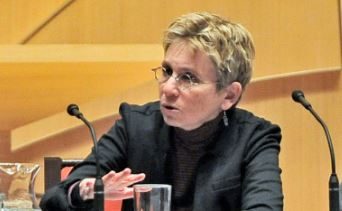
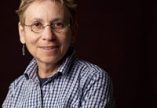
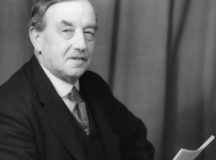

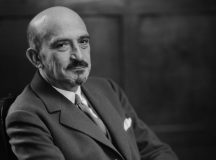
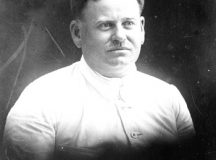































Let’s remember Zionism not the will of the world’s Jews with less than %3 of all Jews migrating from E Europe arriving in Palestine
1885-1914